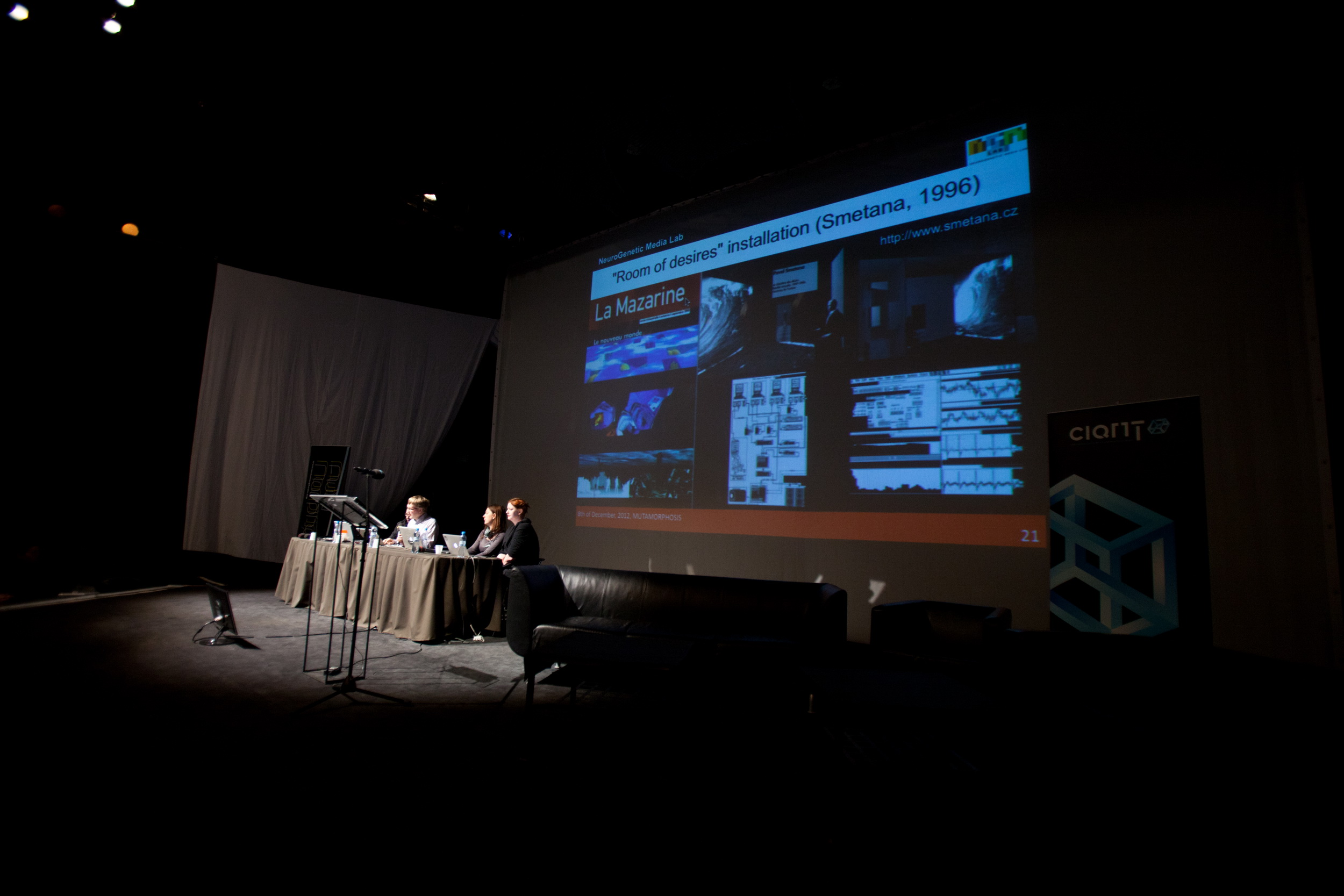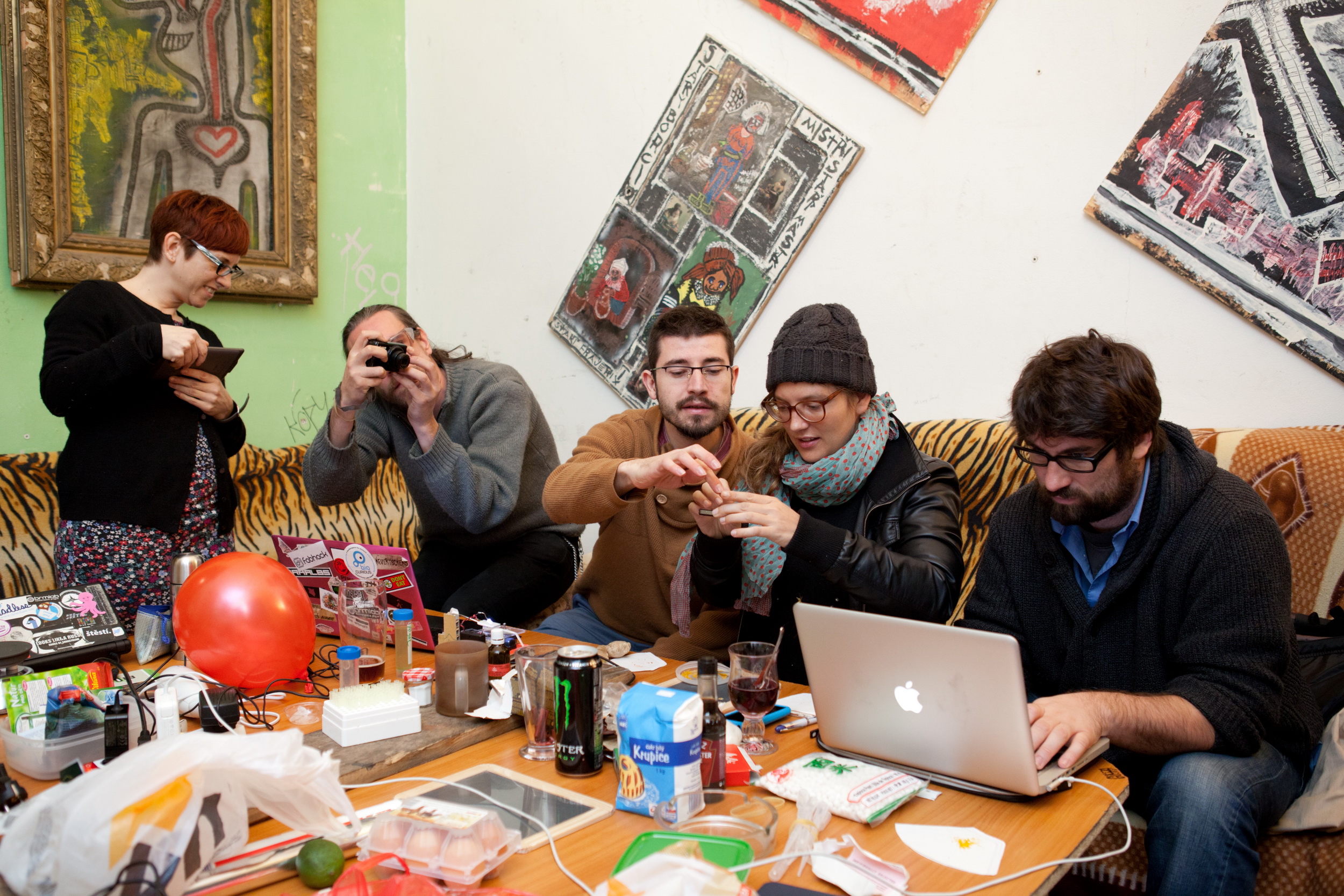By Eva Kekou, 4Humanities International Correspondent
Pavel Sedlák, deputy director/curator at Ciant in Prague, Czech Republic is my interviewee. Pavel was born 1977 in the Czech Republic, and he studied philosophy and the philosophy of art in university. He co-initiated a number of projects in art and science internationally and locally. He is now based at CIANT and I chose to interview him because I would like to feature their work and their remarkable contribution to art and science in Eastern Europe and globally. Their recent conference and festival, which took place early December, was embraced by very important academics and artists and was mentioned as a very big event in Europe.
Eva Kekou: Can you give us some information about a) your background and how/when you joined CIANT, and b) CIANT’s profile, typical events and its intentions as a group?
Pavel Sedlák: CIANT, or the International Centre for Art and New Technologies, was founded in 1998 by the Czech-French artist Pavel Smetana. Back then I was writing about arts and visual culture for various journals. We met, did the interview and I started to explore what technology and creativity can to do together. CIANT started as a laboratory and residency space with clear ideas: to support disciplinary exchanges with focus on cultural and artistic innovation. From paper to projects it took few years. Since then, it has been like a snowball.
EK: What are your aims and intentions at CIANT?
PS: To place Prague on a global map, to provide opportunities for creative individuals to develop, and to showcase and discuss projects that employ emerging technologies.
EK: Can you give us a report on the most recent works and projects and give us some examples?

PS: Our portfolio of projects is growing and changes in time. Very recently we brought together over 100 presenters (artists and scientists) to pay “tribute to uncertainty” in the framework of a 3-day conference called MutaMorphosis (www.mutamorphosis.org). We showed a newly developed Verticalizerprototype that is a rehabilitation device that helps paraplegic people to get better via a special system consisting of body-holding construction and a motivational game-based stereoscopic projection supporting interaction. In the lab, we develop different initiatives for those who have physical disabilities: DIY environmental sensing and brain-computer interfaces, to name just a few avenues of interest. We also run a consultancy program called COALA (CIANT Open Art Lab) which assists emerging talents, mainly students, in developing their projects. For instance, we developed a suitable wearable solution (interactive clothes) for a theatre performance.
EK: How are the arts, sciences and technologies understood in the Czech Republic?
PS: I would say it is similar to everywhere. It is changing fast. From ignorance to support: small steps, difficult negotiations of positions.
EK: What is CIANT’s audience like?
PS: A mixture of students and professionals, from both art and science and technology fields.
EK: Can you name some of the difficulties you encounter at CIANT as curator?
PS: Resources and public understanding.
EK: Have you had some positive experiences by showcasing innovative art works for a Czech audience?
PS: It depends. Bio-tech stuff is still under-exposed, but social media-based projects, such as Face-to-Facebook, was featured in prime time on the National Television.
EK: Do you see collaboration as a positive aspect of your work?
PS: Naturally. CIANT has always favored international collaboration. If you mean collaboration per se, yes, the confrontation of different disciplines and skills is something in which we are interested.
EK: What opportunities do you offer to artists or young researchers?
PS: New projects to be developed. It can be individual residencies or taking part in larger-scale collaborative research and creation processes.

EK: Is the CIANT festival experienced as a challenge to make multidisciplinary art approachable to the public or as a challenge for artists to exhibit their work?
PS: ENTER biennale is always looking forwards, backwards and to the sides. We feature established artists along with young talents as well as showing works of media art pioneers, especially those who are Czech-related, such as Frank Malina or Woody Vasulka.
EK: What do you want to gain from the invited researchers program and the artists in residency?
PS: They bring new air to the lab.
EK: Do you think that the cultural background and situation in the Czech Republic can facilitate similar projects and endeavors? If yes, in what way?
PS: Sure, the situation is changing and more and more people experiment creatively with technologies. Why there is no similar or different type of supporting organization – that I do not know. We have felt like we are a bit “alone”.
EK: What are your future projects and aims?

PS: We are developing new initiatives in different segments. We have a newly established festival for independent stereoscopic 3D films called PARALLAX, with a related training programme called TRANSISTOR, both in Europe and also globally (in the USA and Japan). We are about to launch a new CONNEXT platform that will enable education providers in media art to nominate the best student projects in a pan-European competition. Next, the ENTER biennale will focus on physical disabilities, and we still have proceedings and other publications in progress from the MutaMorphosis conference. In general, we are developing new projects in the area of professional training, with an emphasis on teachers. We feel that teachers at grammar- and high-school levels do need more training to provide better and more adequate education, especially with respect to new technologies.